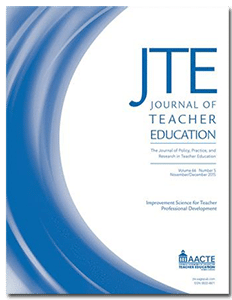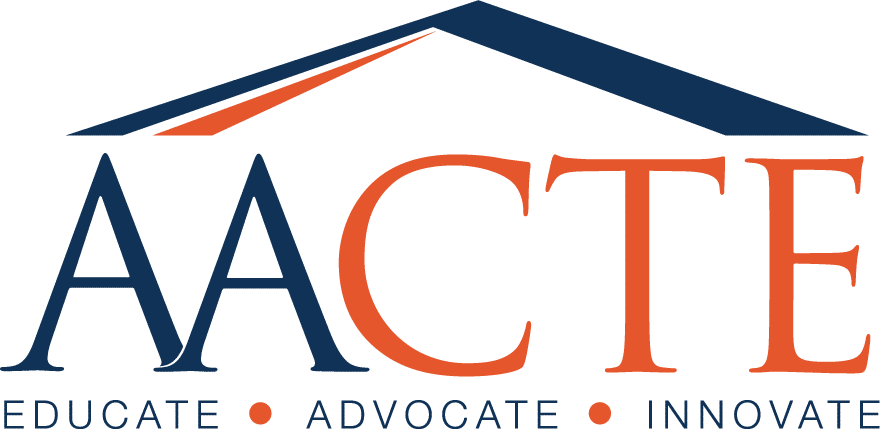JTE Author Interview: Rethinking High-Leverage Practices in Justice-Oriented Ways
 Check out a recent JTE Insider blog interview by the Journal of Teacher Education (JTE) editorial team. This blog is available to the public, and AACTE members have free access to the articles in the JTE online archives—just log in with your AACTE profile.
Check out a recent JTE Insider blog interview by the Journal of Teacher Education (JTE) editorial team. This blog is available to the public, and AACTE members have free access to the articles in the JTE online archives—just log in with your AACTE profile.
This interview features insights on the article entitled, “Rethinking High-Leverage Practices in Justice-Oriented Ways” by Angela Calabrese Barton, Edna Tan, and Daniel J. Birmingham. The article was published in the September/October 2020 issue of the Journal of Teacher Education.
Article Abstract: Justice-oriented teaching must address how classroom-based disciplinary learning is shaped by interactions among local practice and systems of privilege and oppression. Our work advances current scholarship on high-leverage practices [HLPs] by emphasizing the need for teaching practices that restructure power relations in classrooms and their intersections with historicized injustice in local practice as a part of disciplinary learning. Drawing upon a critical justice stance, and long-term collaborative work with middle school teachers and youth, we report on empirically driven insights into patterns-in-practice in teaching which yield insight into both what justice-oriented high-leverage practices may be, and the cross-cutting ideals which undergird them. We discuss the patterns-in-practice and their implications for teaching and learning across subject areas: HLPs that work toward equitable and consequential ends need to be understood in terms of the practice itself and its individual and collective impact on classroom life.
What motivated you to pursue this particular research topic?
Each of us, over many years, has been collaborating with classroom teachers on designing for and learning about teaching in justice-centered ways. In our manuscript, we wanted to share some of these insights with the field, in ways that centered teachers’ practices — how teachers worked with their students to make visible existing injustices, and to disrupt and transform these injustices through/with teaching and learning. We foregrounded how, in their efforts to teach in justice-centered ways, partner teachers sought to amplify the sociopolitical dimensions of teaching and learning. What we mean is that their pedagogies attended to how teaching is never neutral; that power/knowledge relationalities shape opportunities to learn through gatekeeping what counts as legitimate forms of knowing, doing, being, and succeeding.
One of the insights we had with this work was in how the “equity focus” of these pedagogical approaches was located at the intersection of systemic oppressions and local practice. In other words, these practices sought to disrupt the ways in which historicized and systemic injustices, such as institutionalized racism, took shape every day in their classrooms as part of disciplinary teaching and learning. Their efforts sought to impact not only student experiences, but also the broader system of teaching and learning. Their efforts sought to transform, for example, the discourses and practices made legitimate in disciplinary learning, new forms of participation and representations of individual and collective learning, and the distributions of power for making and challenging those decisions. We saw this as different from the equity focus in much of the learning to teach literature, where the focus has been specifically oriented at the individual level. In other words, through improved teaching practices, students, as individual people, will have more powerful opportunities to engage the disciplines meaningfully. Given what we know from critical race studies and studies related to historical and social, ecological foundations of the education debt (Ladson Billings, 2006), we felt it was important to put this work in dialogue with the learning to teach literature in an effort to foster new ways to engage more critically with issues of justice and equity.
At the same time, we also have been working closely with preservice teachers in the classroom and in the field. With this work we sought to get more specific in our efforts to support new teachers with specific practices — which we operationalize as both what teachers do (pedagogical moves) and the stance and commitments which inform what they do (teaching philosophy, curricular choices).
Writing, by necessity, requires leaving certain things on the cutting room floor. What didn’t make it into the article that you want to talk about?
We were appreciative about being able to include cases of three different teachers, working in different contexts and at different points in their trajectories. This allowed us to delve into the variations in the practice of recognition and refraction towards social transformation, including the different challenges teachers face. At the same time, due to space limitations, we were only able to share one in-depth case per teacher. Had we had more space we would have been able to share additional cases in order to better contextualize the tensions teachers’ experience, both in kind and degree. One of these tensions relates to how social transformation in classroom settings necessarily impacts the broader schooling community. Another one of these tensions relates to how social transformation of the learning context follows forward with participating youth into other learning contexts, both inside and outside the partner teachers’ classrooms.
Consider how, across these cases, as each partner teacher re-organized what learning looked like in their classroom, knowledge/power hierarchies shifted, opening up spaces for students to be different kinds of experts that mattered as a part of their STEM learning. As teachers began to give witness to previously hidden student expertise, they found themselves sometimes unsure of how these expertise could matter in other subjects they taught — how to integrate such expertise into disciplinary learning in non-anodyne ways. This further required teachers to create new spaces to support students in making these connections to disciplinary knowing visible, even when teachers themselves did not know the way forward. Ms. H, for instance, reminded us in her interviews that she realized she needed to see teaching as always a process of co-learning with the students, beyond the lesson-planning and pedagogical decisions she might already have made. It was a learning process for Ms. H and partner teachers to see that each act of recognition and refraction fostered new ways of being in the classroom, new spaces of learning and new foci of learning (e.g., learning about youths’ lives and hoped-for-futures, how school practices sustain injustices, etc.).
The evolving and developing processes of recognition and refraction meant teachers had to keep plowing forward, with youth, to wade through sociopolitical issues as they continually surfaced. For example, Ms. P, another partner teacher who integrated ethnography into her teaching in ways similar to Ms. H, noted that “the kids really got into this and how the surveys and interviews we did really got their experiences, their concerns to shine in their engineering work. It’s like I can’t go back. It wouldn’t be fair to the kids, even if it’s not easy to do.”
In addition, our work is participatory in nature. The insights we presented in this manuscript are a reflection of the work and commitments of our partner teachers and their students. We would have liked to have included more direct transcripts so that their voices are more present in their cases.
References
Ladson-Billings, G. (2006). From the achievement gap to the education debt: Understanding achievement in US schools. Educational Researcher, 35(7), 3-12.
Tags: equity, research, social justice






